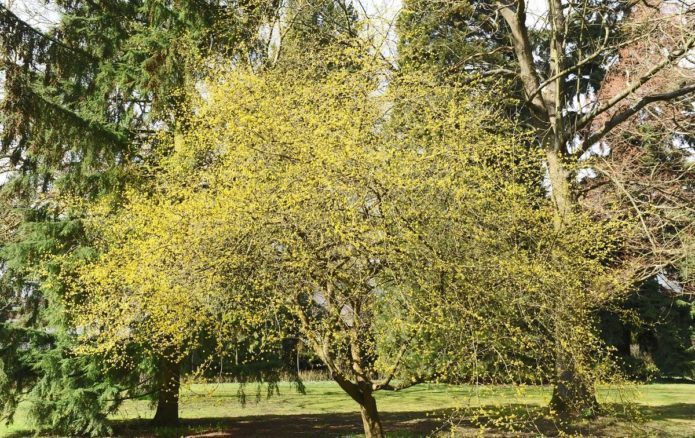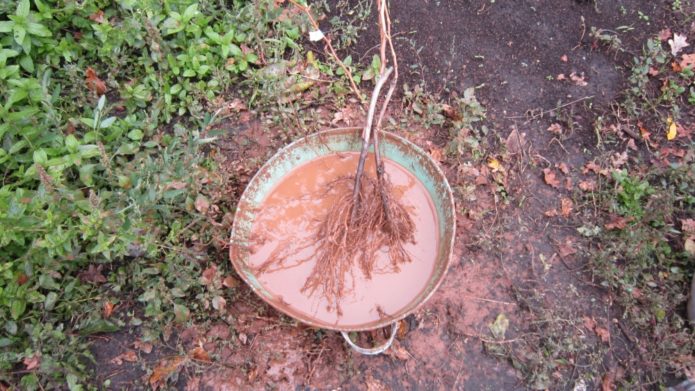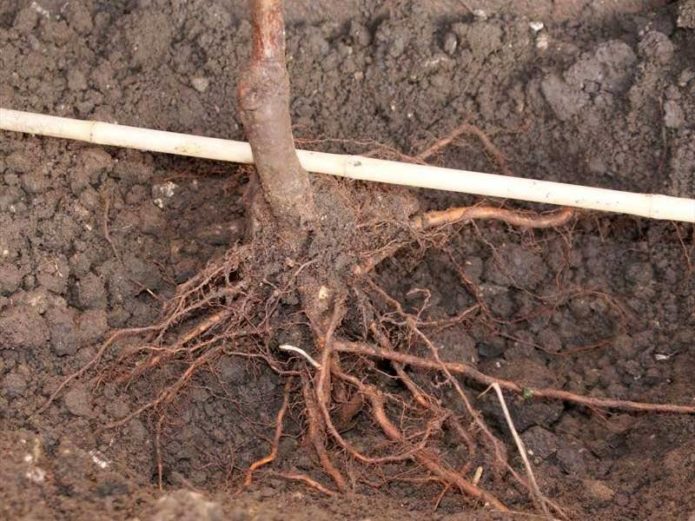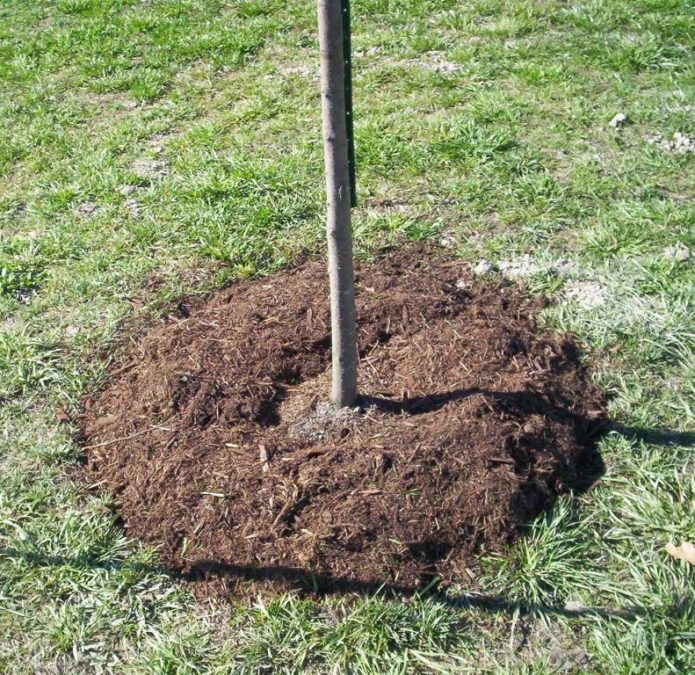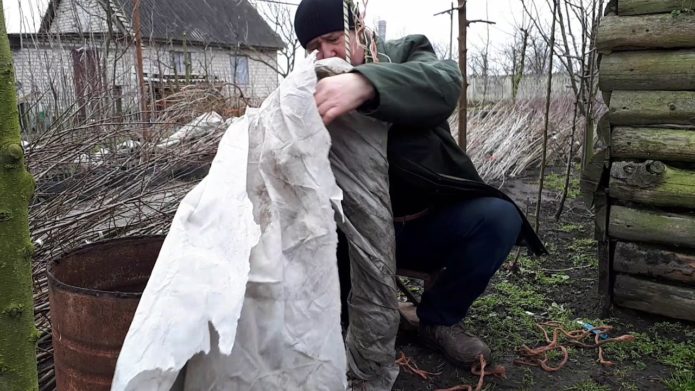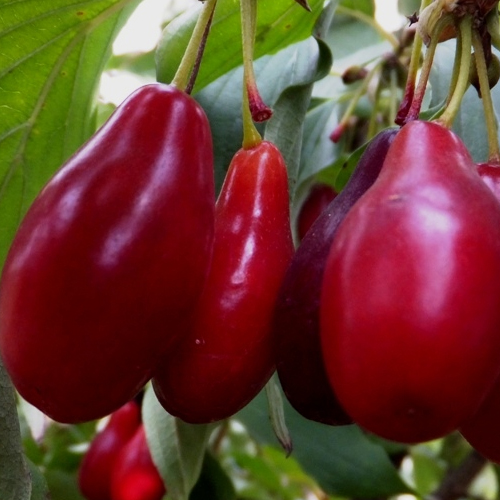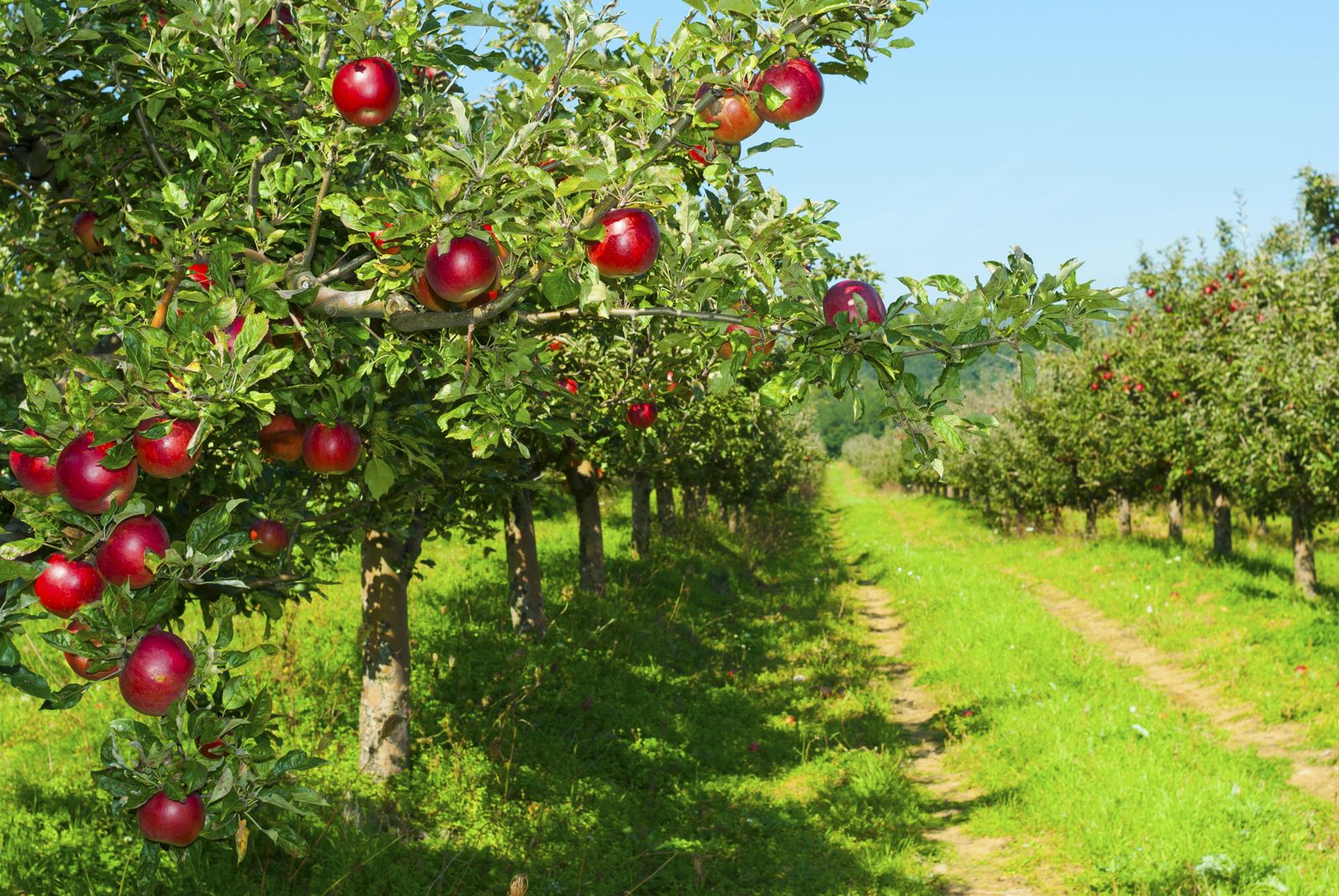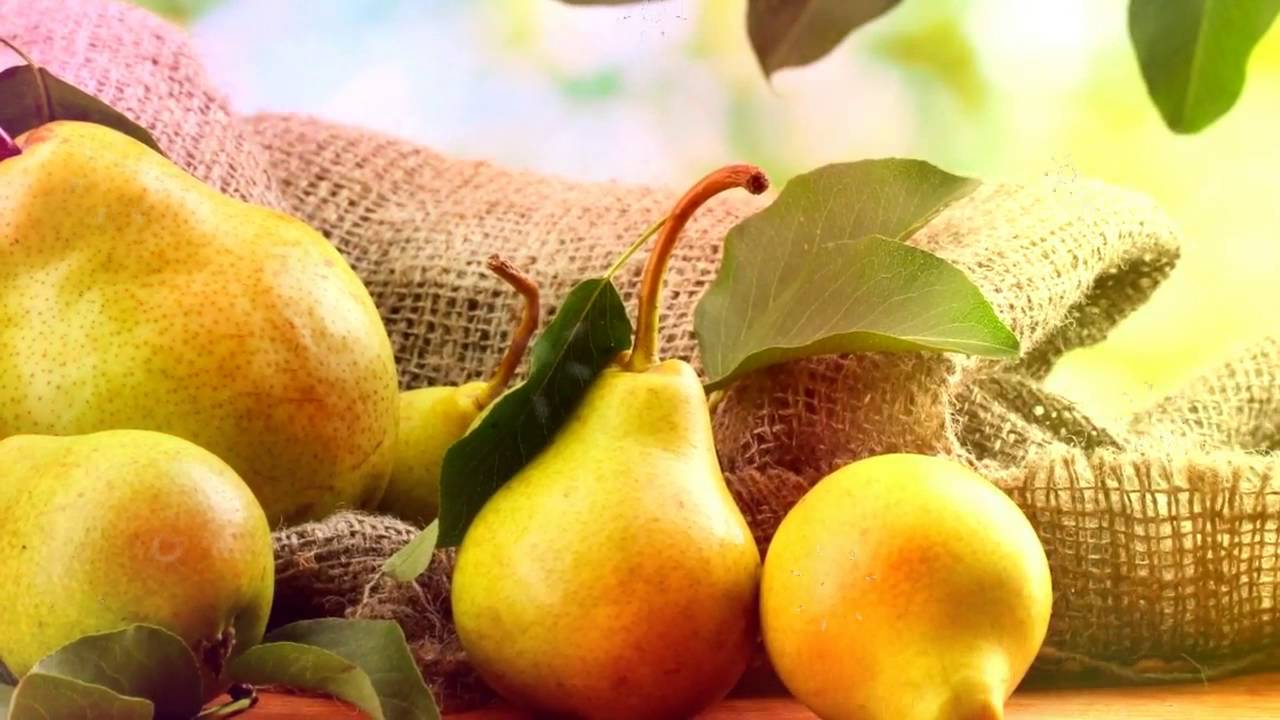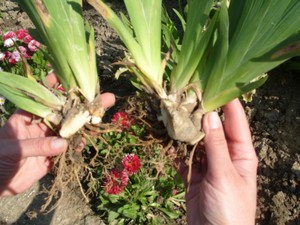Dogwood, of course, is a southern plant, but it turned out that it grows well in the middle zone of our country. Summer residents near Moscow are afraid to plant dogwood in the plots, but this is temporary: after all, those who took the risk and received good results can already begin to envy. This cold-resistant tree lives for a long time, is picky about the conditions, and with the correct selection of the variety, it gives good yields of vitamin berries.
Content
How to grow dogwood in the suburbs
In the wild, dogwood grows in the mountains of the Crimea and the Caucasus, forests of Central and Southern Europe, on the American continent, and is also found in Southeast Asia. Looking at the State Register of the Russian Federation, we will be a little surprised: there are only 6 varieties of this plant in it (5 of them have appeared in recent years), and all of them are recommended for any climatic region. Indeed, it turned out that dogwood can grow almost anywhere.
What is it - dogwood?
Dogwood can be either a tree or a shrub that sheds its foliage for the winter. In the wild, it can grow up to seven meters in height, and ten-meter giants have also been recorded. They do not grow like this right away: the dogwood grows for a very long time, not a dozen years, there are also age-old trees. The main branches are located horizontally, the crowns are very spreading. The bark is from gray-green to dark gray, the leaves are bright green above, somewhat lighter on the back.
The flowers are collected in large inflorescences that resemble umbrellas. The flowers are bisexual, but the dogwood is a cross-pollinated crop, pollination is poor inside one tree, more often the dogwood is planted in pairs. The option of grafting the second grade into the crown of a single tree also helps. Dogwood blooms very early, much earlier than leafing and earlier than most other crops. Already in April, when the temperature reaches 8-10 aboutC, the trees turn entirely yellow or white with flowers. Flowering lasts about two weeks.
The fruits are drupes: there are oval, round, pear-shaped. Fruit weight from 2 to 6 g, in new varieties - up to 10 g. Most varieties have bright red fruits, but there are also yellow, purple and almost black. The bone is elongated. The pulp, which is 2/3 or more of the mass of the fruit, tastes like a rosehip and combines sourness and sweetness, moderately tart. Plants grown from seeds bear fruit in the 6th or 7th year. From an adult tree, you can collect up to 100 kg of fruit, and from a half-century and more.
Despite its southern origin, dogwood can withstand a drop in air temperature to -30 aboutC, and some grades and below. More than frost, he is afraid of winter thaws and subsequent frosts.It is this kind of weather that is typical for the Moscow region, therefore, the cultivation of this crop in the Moscow region cannot be called a simple matter, although the dogwood itself is very unpretentious. He is not afraid of drought, since the roots go deep. Practically does not get sick, dogwood and pests are not terrible.
Video: blooming dogwood in the Moscow region
Planting dogwood
In the botanical garden of the Academy of Sciences, there is a whole cornel grove that has been growing for almost 70 years. Probably, this is a good confirmation that it is possible to plant dogwood for gardeners near Moscow. It is not difficult to do this, but you must immediately correctly determine the place and timing of planting. It is safest to plant dogwood at the end of September or a little later: after leaf fall on poplars. At least three weeks should remain before stable frosts. Spring planting in the Moscow region is extremely difficult: it is necessary to plant the dogwood in the warm ground, but before the buds awaken, which is almost unrealistic.
An illuminated area is chosen for planting, but a slight darkening, for several hours a day, is not only possible, but also desirable. Better - on the south or southwest side of the garden. Since the dogwood can grow into a large tree, it is planted no closer than 3 meters from the fence, preferably from the leeward side. A slight slope is acceptable. Perhaps the neighborhood with any trees, with the exception of the walnut. Any soil is suitable, except for swampy. The tree will also grow on clay, but fruiting will be weak.
Two-year-old seedlings 1–1.5 m high take root best of all, but you can also buy a one-year old. The only important thing is the absence of damage to both the bark and the root system. Planting a tree is no more difficult than, for example, an apple tree or a pear, only you need to take it seriously, realizing that this tree will outlive the owner.
If a mistake is made in choosing a place, in the first years this is fixable: the dogwood normally tolerates a transplant at any age as long as it is technically possible.
Since the tree will eventually require fertile soil over a large area, they dig up the site in advance, adding humus or compost at a dose of 1 bucket per 1 m2... In the summer, they dig a hole measuring 80 x 80 x 80 cm, and lay drainage on its bottom (gravel or broken brick). The top layer of the soil is returned to the pit by thoroughly mixing it with 1–2 buckets of humus, 200 g of superphosphate and 0.5 l of wood ash.
There is an opinion that it is possible to plant a dogwood without fertilizers at all, but in fertile soil, of course, it will be much more comfortable.
A landing stake about a meter high is driven in in advance, 2 buckets of water are poured into the pit. The course of the autumn planting itself is traditional:
- The roots of the seedling are soaked in water and dipped in a clay mash. If there are leaves on it, carefully cut them off.
- Having taken out a part of the soil from the hole, they put a seedling, straighten the roots and cover it with soil so that the root collar is 3-5 cm above ground level.
- Tie the seedling to the stake. Water with 3-4 buckets of water.
- They make out a watering circle, mulch it with peat or humus with a layer of 6–8 cm.
If the autumn is not too dry, you do not need to do anything else, otherwise watering is repeated after 1-2 weeks.
Basic care activities
Dogwood is extremely unassuming, but basic care is required. In the first few years, the tree is watered 2-3 times a month, but when the roots grow, they do it only in dry weather. In a thirsty dogwood, the leaves are folded in a boat. You should not water the southern guest with icy water, it is better to take settled and warmed up in the sun. In rainy weather, watering is completely useless.
Cornel can grow without additional fertilizing, but fertilizing will significantly increase its yield. Humus (in spring or autumn, 2-3 kg / m2) can be added both with digging and as mulch. Closer to autumn, wood ash is shallowly embedded, several handfuls per tree. If the soil in the area is too acidic, from time to time sprinkle the near-trunk circle with lime or chalk. In the early years, weed control; they are not dangerous for an adult tree.
Young trees, up to 2–3 years old, in the Moscow region must be prepared for winter. This preparation consists of removing fallen leaves and renewing the mulch layer. For the winter, they arrange a pillow of humus over the roots, pouring a layer of 15–20 cm. For the first 2–3 years, while it is possible, trees are also covered with spunbond, possibly equipping a frame for this. With the fall of snow, they throw it into the trunk circle. Since winter thaws are frequent in the Moscow region, you can throw in a lot of snow so that it does not have time to melt all, and then grab the trees with ice from the frozen water.
Pruning
In the early years, the crown of the tree is formed. Pruning has to be done in early spring: dogwood wakes up earlier than many trees. The stem is made 50–70 cm high, above this level 5–7 skeletal branches are formed, evenly spaced around the trunk. The crown can be given any shape, but for ease of maintenance it is made pyramidal or oval.
Tying the branches in the desired position to the pegs driven in the right places also helps in the formation of the crown.
Only sanitary pruning is shown to fruiting trees: broken and dried branches are cut out, as well as those growing in inconvenient directions. After 20 years, the dogwood requires rejuvenating pruning: the oldest branches are greatly shortened or even cut out. Cornel can easily tolerate pruning, but the tool must be clean, and the wounds must be covered with garden pitch.
Harvesting
Dogwood blooms very early, but the harvest ripens, on the contrary, late, in most varieties not earlier than September, and in late-ripening varieties - until early November. Ripe fruits do not hang on the branches for a long time and fall off, therefore, periodic collection is necessary. You can pick the fruits and not quite ripe: during storage, they tend to "reach". After ripening, the dogwood is stored at a temperature close to 0 aboutFROM.
However, fresh fruits are not stored for long, no more than two weeks. Therefore, in order to preserve the taste, they are frozen. There are many recipes for processing dogwood: jam, compotes, marmalade are made from it, juice is prepared, etc.
Reproduction
In the wild, dogwood reproduces by self-sowing, that is, by seeds (more precisely, by seeds). It is propagated by seeds in gardens. In particular, this method is often used in the Moscow region; in the south, they act easier, use propagation by layering and cuttings. However, it has been shown that it is precisely during seed propagation that the plants most resistant to cold weather are obtained.
For this, seeds are removed from ripe fruits, washed and sent for a whole year for stratification. This procedure is carried out in wet sawdust or moss at a temperature close to 0 aboutC. It is time consuming, all year long it is necessary to monitor the moisture content of the substrate, but there is no other way. Only after stratification are seeds planted in pots to a depth of about 3 cm, and then carefully look after the seedlings. At first, they grow very slowly: only after two years, the seedlings, which have reached a height of about 15 cm, are transplanted into open ground.
Dogwood varieties for growing in the Moscow region
In a cold climate, and in the case of dogwood, the climate of the Moscow region can be called such, it is safest to grow early varieties, in extreme cases, the average ripening period.More than other criteria when choosing a variety, one has to pay attention to winter hardiness. It is better not to plant seedlings brought from the southern regions in the Moscow region.
One of the best varieties today is considered the new variety Nastya, included in the State Register in 2017. Early variety, medium-sized tree with a not very thick oval crown. Shoots are straight, without pubescence, leaves are large. Fruits are drop-shaped, red, weighing about 5 g. The pulp is sweet-sour, juicy. The bone is small, easily detachable. The taste was rated by the tasters at 5.0 points. The yield is high, the fruits are suitable both for fresh consumption and for processing. The variety is frost-resistant, disease-resistant.
In addition to Nastya, somewhat older varieties are known in the Moscow region, although all of them were bred not so long ago. For example, the Firefly variety is convenient for harvesting, since the tree grows no more than 2.5 m. Bears fruit annually and abundantly. Fruits weighing up to 7.5 g, bottle-shaped, black-red, good taste. Having ripened by the very beginning of September, they firmly adhere to the branches, and the collected ones can be stored for more than three weeks. Mostly used for recycling.
About the same size and shape, the fruits of the Evgenia dogwood variety. Their color is dark red, up to almost black. The pulp is tender, tasty, well separated from the stone. Ripening is amicable, and the fruits ripen well during storage, tolerate freezing well. Productivity is high, the variety is drought and frost resistant.
The Elegant variety has larger fruits, weighing up to 9 g, cherry-colored. Taste with a predominance of sugar content over acidity, the stone is easily separated. The fruits tolerate transportation well. The yield is at an average level, which is due to the small size of the tree: its height is a little over 2 meters.
The weather near Moscow is well tolerated by the dogwood of the Elena variety, which bears fruit at the end of summer. The yield is slightly below average, moreover, the fruits quickly crumble. But they are well transported and have a universal purpose. Fruit weight about 7 g, dark red color, high sugar content. The Nikolka variety has similar characteristics.
Video: Firefly dogwood berries
Beginner tips for growing dogwood
Since few grow dogwood, it would be interesting to summarize the main points that you need to know when deciding whether to plant this crop by beginners.
- It is necessary to plant dogwood at the end of September in partial shade, not in clay soil.
- You need to plant at least two plants, while keeping in mind that most varieties give a spreading crown, occupying a considerable area in the garden.
- In the early years, the seedling must be kept under a layer of mulch, and also covered for the winter; trees grow very slowly at first.
- It is not difficult to take care of the tree, but it is imperative to form a crown that is convenient for maintenance.
- You will have to wait for the harvest for 7–8 years, but then the tree will bear fruit for at least half a century.
- In a fruiting tree, pruning is carried out to a minimum.
- To get good yields, you need not only a second tree, but also the presence of flying insects.
- You should choose the right variety, based not only on the yield (it is sufficient for all varieties), but also on when the tree bears fruit, how firmly the fruits hold on the branches, what is their purpose.
If these rules do not scare you, you can safely prepare planting holes and look closely at the varieties. Any novice gardener is able to grow a dogwood: there would be a desire.
Cornel in the Moscow region is not a very common culture: many gardeners believe that a tree from the south has no place in a cold climate. But modern varieties live well and bear fruit in the middle lane. Therefore, you can safely experiment and plant dogwood in your plots.
